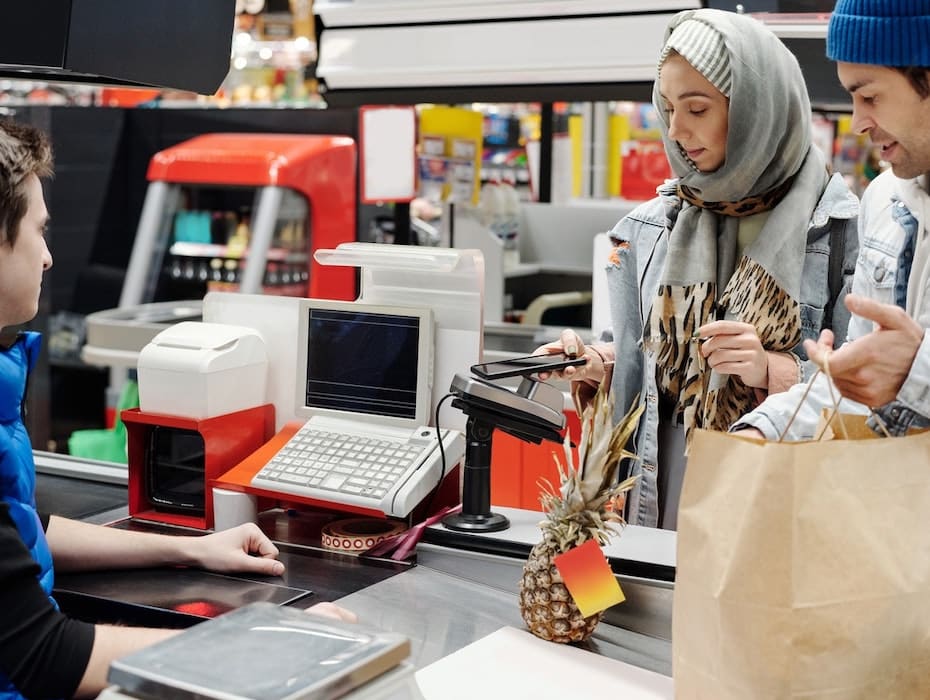Highlights
The following best practices for retail call centers are discussed:
- Establish key performance indicators to evaluate and improve results
- Continuously coach reps to pursue individual and collective growth
- Provide ongoing access to training resources
- Test the contact process using live recordings and mystery shoppers
- Empower reps with authority to resolve issues
- Equip your reps with the most effective communications system to support your customers
💁🛒💻 Want to see how the right technology can help with the flow of the customer experience in retail call centers? Grab our eBook.
Call centers are a critical component of a retailer’s ability to resolve customer issues and turn one-time buyers into long-term, loyal customers. On the flip side, poor contact center execution turns away customers, erodes your revenue and profit, and negatively impacts your brand image.
To optimize your customer experience and seize upon the advantages of a successful call center, employ proven strategies.
Stay informed with RingCentral
Retail call center best practices
The following is a look at several best practices to make your retail call center a centerpiece of your operation.
1. Establish and evaluate key performance indicators
Key performance indicators (KPIs) are the metrics viewed as the best signal of success in an organization or division. In call centers, first-call resolution is one of the highest priorities. Resolving issues on the first effort by the customer to communicate with you alleviates the build-up of frustration and helps protect against aggravated customers who not only leave but spread negative opinions about you.
There are other KPIs that you might use or consider in a retail call center, including:
- Average wait time (how long a customer was on hold before getting through)
- Average call-handling time
- Ratio of outgoing contacts blocked or ignored
- Average time to satisfactory resolution
To optimize results, whether for your outbound or inbound call center, identify which KPIs best align with your company and objectives. Consistently evaluate them, share results with your team, establish measurable objectives and time frames, and employ strategies to pursue improvement.
2. Coach continuously
Continuous coaching is tied to your KPIs and overall effort to achieve optimized results. Many organizations view training as a one-time process facilitated with new employees during a brief period at the start of their employment, but that’s not the best way to view it.
Coaching and development is a never-ending pursuit. There is always room for each employee and your team as a whole to get better. It is important to maintain a positive tone, but identify the growth opportunities for individual reps and customize regular coaching sessions to help them develop.
3. Provide ongoing access to self-led training resources
In addition to regular coaching, give your employees ongoing access to tutorials and other training resources. You can make these available through an intranet, or another internal platform that is easily accessible by employees, but secure from outsiders.
The typical retail call center has many circumstances and processes reps need to know. Memorizing and intuitively applying these during dynamic interactions is difficult. By having resources available, reps can access and review materials for less common situations that arise. Over time, handling varying types of calls and consistently reviewing training resources increases a rep’s ability to intuitively adhere to best practices.
4. Test the process
There are a variety of ways you can use live interactions for training. Some call centers record calls for training purposes. They use examples of contacts with successful outcomes and unsuccessful outcomes to coach employees. Managers can review calls with employees and talk through what worked and what didn’t work on a call.
Additionally, or as an alternative, you could use mystery customer contacts. Many retailers use mystery shoppers to come into stores. The same concept applies to service interactions. Guide the shopper on questions or problems to bring up, and give them a thorough evaluation sheet to provide feedback.
One reason to consider the mystery shopper option in addition to recorded calls is that it allows the customer to participate in evaluating effective communication techniques. Often, reps are trained based on universally-recognized best practices. However, customers in your particular environment might view methods differently.
5. Empower your reps
Many retailers empower employees in stores but do not necessarily apply the same approach in contact centers. However, the benefits of empowerment still apply. Employees feel more valued and confident with their decision-making ability. First-call resolution rates are also likely to improve when frontline reps have the authority to enact remedies.
Empowerment only works with training, motivation, and trust. However, in conjunction with those things and continuous coaching for improvement, it can work for your team and your customers.

6. Motivate and retain top talent
Most of the best practices discussed here are only possible when you have a team with the motivation and talent to execute them. Contact centers can be very stressful environments. However, a positive tone, coaching for growth, and effective incentives can help you maintain morale.
When hiring, consider the culture, contact scenarios, and other specific factors that impact a rep’s success. Hire the best fit for your business and team.
7. Implement the most effective communications system possible
The meaning of “effective communication” is much different in the modern call center than in the traditional model or in physical stores. The retail sector is becoming increasingly digital, and your team needs the most advanced tools to interact with customers in the way they want.
A unified communications system, particularly an advanced inbound contact center solution, has become the standard for comprehensive, cross-channel contact center service. This type of solution allows each rep to engage with customers seamlessly across all popular communication methods. By responding to prompts, customers get routed to the best rep to resolve their issue based on language, skills, or product types.
An inbound contact center solution, part of a broader UCaaS (Unified Communications as a Service) platform, is essential to achieving your KPIs and gaining the most effective interaction data for continuous improvement. It provides the tools and analytics needed to handle incoming customer interactions efficiently, ensuring that your team can deliver superior customer experiences while managing high volumes of inbound communications.
A UCaaS is essential to achieve your KPIs and gain the most effective interaction data for continuous improvement.

Tap into the power of RingCentral for your retail contact center
The strategies described here are used by the most accomplished retailers and contact centers. Incorporating best practices into your operation should boost your ability to retain customers longer, achieve greater financial outcomes, and maintain a strong customer-oriented brand image.
A unified communications solution is necessary to reach your call center objectives. RingCentral has a top solution that equips your support team to reach peak performance. It allows for seamless transitions from interactions on one communication channel to another, skill-based call routing, and quick transfers when you need them. It also has advanced security features, including multi-factor authentication and message encryption. RingCentral’s solution is uniquely tailored for retail environments. See our solutions for retail in action when you request a demo.
Updated Apr 09, 2025











